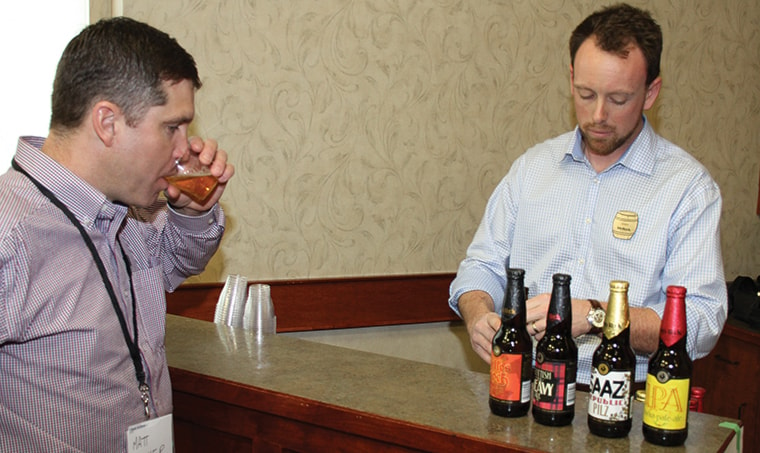In Alberta, barley is closely tied to beef and beer.
But the cereal crop has tremendous potential as a food product for people, says the chairman of the Alberta Barley Commission.
Matt Sawyer shared this view in Lacombe on Thursday during a presentation hosted by the Alberta Barley Commission, Rahr Malting Co. and Dow AgroSciences.
“We see the food barley market as a real potential for growth for us in the future,” said Sawyer, who farms near Acme.
Much of this enthusiasm stems from Health Canada’s decision in July to allow the health benefits of barley products to be publicized. Specifically, the department has accepted scientific evidence that the consumption of barley beta-glucan can reduce blood cholesterol, and lower the risk of heart disease.
The Alberta Barley Commission is now working to spread the word with consumers, in hopes that this will generate demand from food retailers.
“We need to get the ball rolling on bringing barley to grocery store shelves and making consumers want the product on a consistent basis,” said Sawyer.
The domestic food market isn’t the only one that the commission is eyeing. It’s also trying to get Alberta barley onto dinner plates in Asia.
“We know there’s a lot of barley that’s consumed in the Asian countries,” said Sawyer. “It’s an opportunity for us to get into that market.”
Other non-traditional markets for barley are being explored at the University of Alberta.
Lingyun Chen, an assistant professor in plant protein chemistry and technology there, has concluded that barley protein is a good emulsifier and encapsulation material.
ªThis could open the door for it to be used as an emulsifying agent for food and cosmetic products, and to encapsulate neutraceuticals.
The Alberta Barley Commission has been helping to fund Chen’s research.
Currently, the livestock feed market consumes about 88 per cent of the barley produced in Alberta, with the malting industry accounting for most of the rest, said Sawyer.
The commission continues to support these traditional uses, and is funding research and marketing efforts related to them.
But it’s tough not to be enthused about the alternatives.
“It’s an untapped market and it’s exciting,” said Sawyer.
For now, farmers can hedge their bets. Dual-purpose barleys have and are being developed that can be sold into more than one market.
hrichards@www.reddeeradvocate.com
